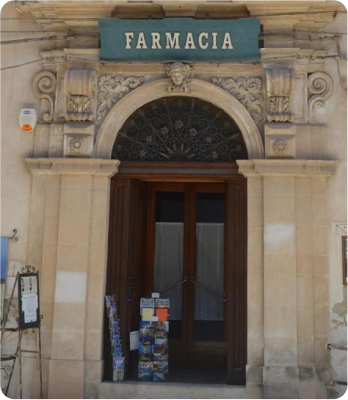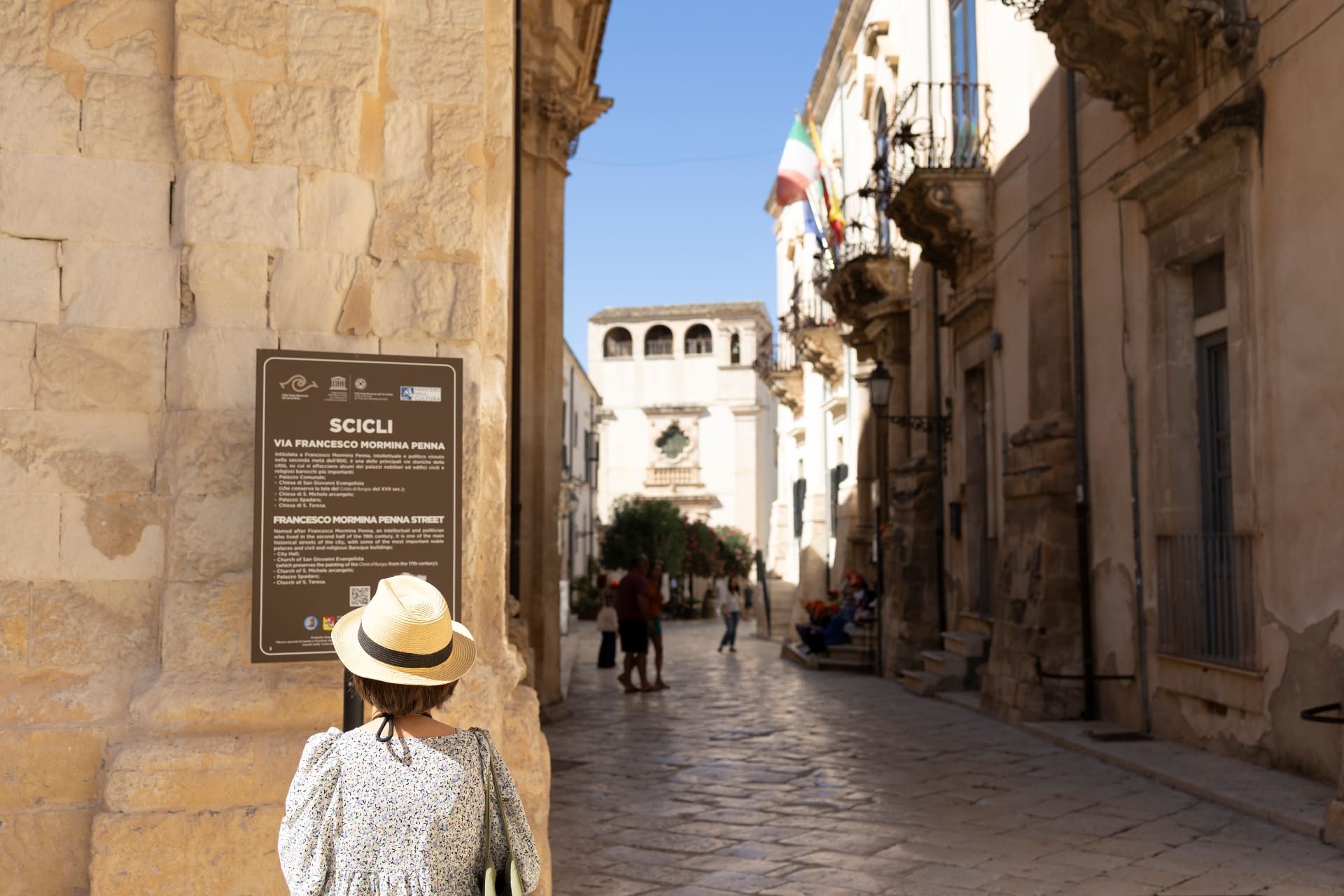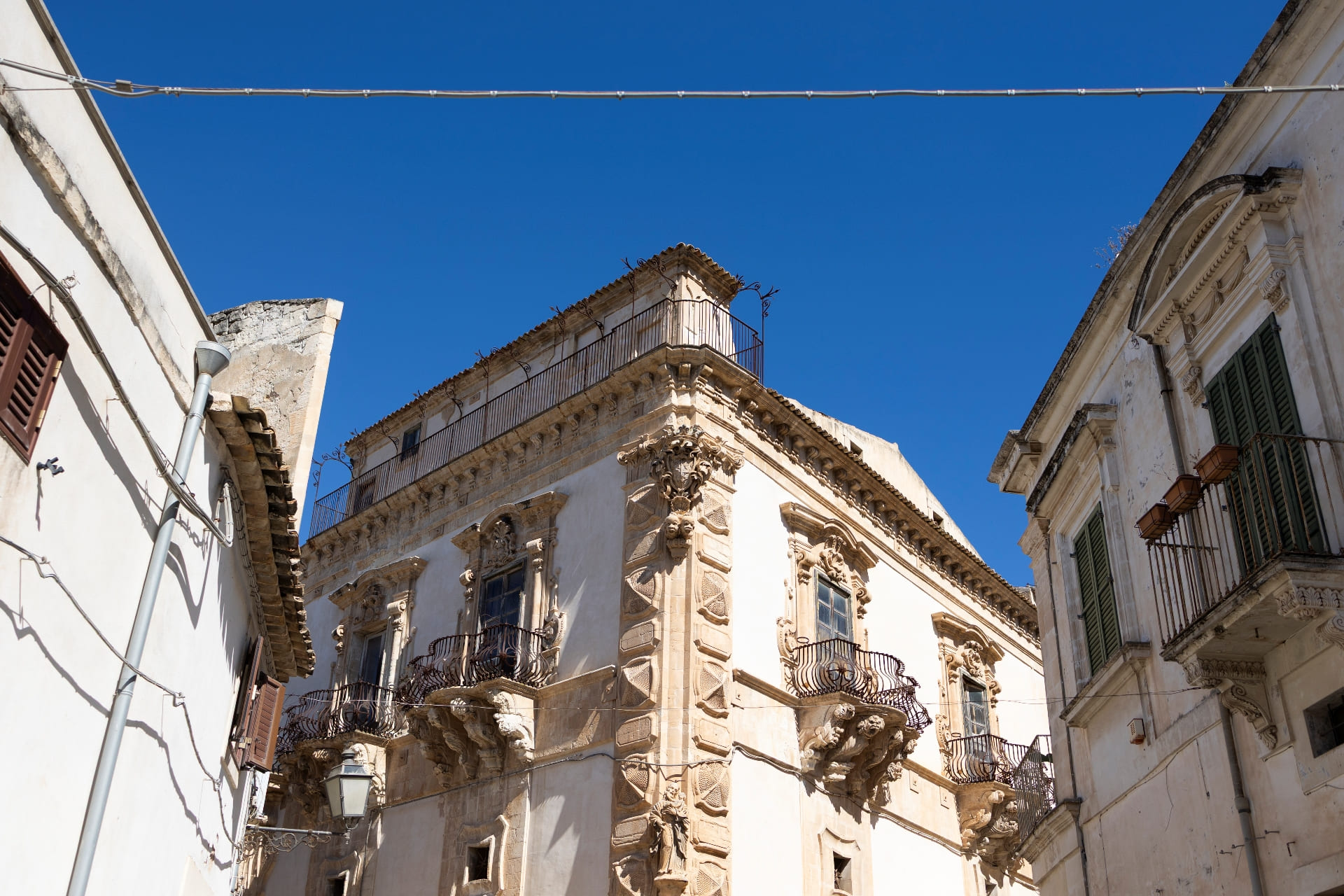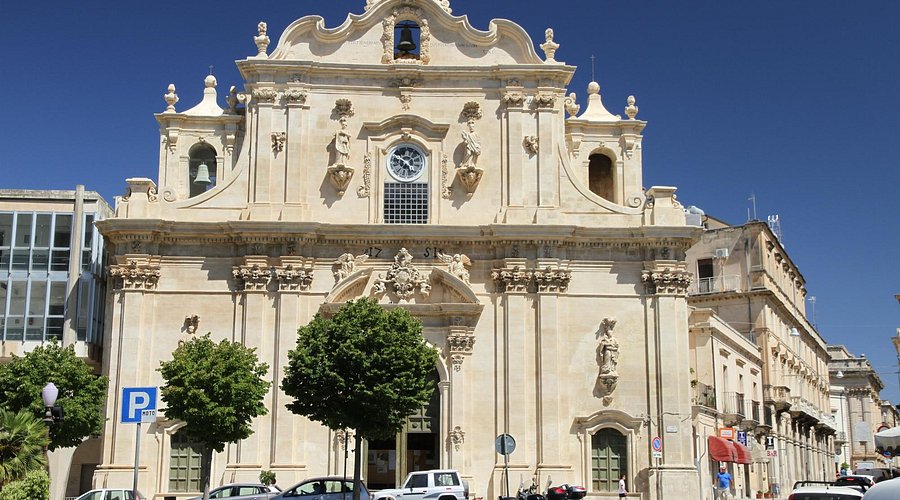Scicli incanta con il suo centro storico Patrimonio UNESCO, le sue chiese barocche, i palazzi settecenteschi e la vicinanza con un litorale incontaminato.
Scicli, perla del Barocco
Scicli

Natura, Barocco, Mare, Panorami
1 giorno
A piedi
Fun Fact: Scicli è nota anche per essere la “Vigata” della fiction Montalbano: il suo municipio è il famoso commissariato.
The route:

Church of Santa Maria La Nova
The Church of Santa Maria La Nova, located in the historic center of Scicli, has ancient origins, with documented references dating back to the 14th century. The building suffered severe damage during the 1693 earthquake that struck the entire Hyblean region, making a long and complex reconstruction necessary. Work began in the second half of the 18th century and was completed only in 1857, when the church was reopened for worship. The current façade, in neoclassical style, is the result of 19th-century interventions that gave it its sober and elegant appearance. Inside, the Latin cross layout unfolds into three naves, richly decorated with refined stuccoes and housing sacred artworks of great value. On the main altar stands the statue of Our Lady of the Snow, a particularly venerated figure by the local community. The church remains an important religious and cultural landmark for the city of Scicli.


Church of San Matteo
A historical and cultural symbol of Scicli, the Church of San Matteo stands atop the hill of the same name, offering a breathtaking panoramic view of the city and the surrounding landscape. Its origins date back to the 11th century, making it one of the oldest and most important churches in the area. After suffering severe damage in the 1693 earthquake, the church was rebuilt in Baroque style, although the façade was never completed, giving the structure a unique and distinctive appearance. For many centuries, it served as the mother church of Scicli, a spiritual center and reference point for the community, until it was replaced in the 19th century by the larger and more modern Church of Santa Maria La Nova. Although now closed for worship, with bare yet historically rich interiors, the Church of San Matteo remains an important symbol of the city's historical identity and a scenic viewpoint cherished by both visitors and locals.


Via Francesco Mormina Penna
Via Francesco Mormina Penna is one of the main arteries of Scicli’s historic center and has been declared a UNESCO World Heritage Site as part of the “Late Baroque Towns of the Val di Noto.” The street gently descends from Piazza Municipio and features a sequence of buildings ranging from the 17th to the 20th century. Key landmarks along the way include the Church of San Giovanni Evangelista, the Church of Santa Teresa d’Avila, the Church of San Michele Arcangelo, and the Town Hall, built between 1902 and 1906 in an eclectic Neo-Renaissance style. The street is known for its harmonious blend of architectural styles, with façades in local limestone and Baroque decorations. It is a lively and well-frequented place, hosting cultural events and religious celebrations. The street also serves as a filming location for the famous TV series Inspector Montalbano, standing in as the police station of the fictional town of Vigata.


Fornace Penna
The Fornace Penna, located in the hamlet of Sampieri in the municipality of Scicli, is a significant historical industrial site completed in 1912 in Contrada Pisciotto. Designed for the production of bricks and tiles, it was a cornerstone of the local ceramic industry and played a crucial role in the economic development of the Iblean area in the early 20th century. In 1926, the factory was severely damaged by an arson fire, the causes of which remain shrouded in mystery, and its production activities were compromised. Despite this, the complex has retained its grandeur thanks to its rationalist industrial architecture, featuring tall chimneys, masonry structures, and functional spaces that reflect its historical and technical value. Today, the Fornace Penna is promoted as a cultural and tourist site, hosting events, exhibitions, and initiatives that celebrate the industrial and traditional heritage of Sampieri and the surrounding area, acting as a bridge between past and present.


Busacca Square
Busacca Square, located in the heart of Scicli, is one of the city’s most significant urban spaces, a crossroads of history, art, and everyday life. The square took on its current urban layout at the end of the 19th century, when in 1884 the monument to Pietro Di Lorenzo Busacca, a wealthy benefactor from Scicli, was placed there. Historic buildings surround the square, including the Church of the Carmine, built after the 1693 earthquake. The ogival portal and Gothic rose window are among the original elements that survived the quake, bearing witness to medieval architecture. The adjacent former Carmelite convent, now home to the municipal library, further enhances the cultural value of the site. Today, Piazza Busacca is a vibrant and lively space, hosting both civic and religious events, and remains a key meeting point for locals and tourists wishing to immerse themselves in the historical and social identity of the city.


Palace Beneventano
Palace Beneventano is one of the finest expressions of Sicilian Baroque, located on Via Duca D'Aosta in Scicli, in the heart of the historic center. Built in the 18th century, the palace stands out for the extraordinary artistic quality of its façade, adorned with grotesque masks, sculpted corbels, allegorical figures, and curved wrought-iron balconies. This combination of elements creates a dramatic visual effect that blends symbolism, irony, and fantasy in a unique synthesis. Cited by scholars and art historians as one of the most significant examples of Iblean Baroque, the palace is not currently open to the public but continues to attract visitors, photographers, and enthusiasts for its exceptional beauty. It is considered one of the symbolic monuments of Scicli and a noteworthy piece of international architectural heritage.


Square Italia and the Mother Church of sant’Ignazio di Loyola
Piazza Italia is the heart of modern-day Scicli — a broad urban space surrounded by historic buildings and bourgeois architecture that reflect the city’s urban development between the 19th and early 20th centuries. The square is dominated by the majestic Mother Church of Saint Ignatius of Loyola, built starting in the 18th century, and it represents a perfect balance between religious tradition and contemporary life. The church, in late Baroque style, features a harmonious façade and a three-nave interior enhanced by elegant yet understated decorations. Today, Piazza Italia hosts civic events, markets, religious celebrations, and social gatherings, serving as the main meeting point for residents and visitors. Its central role, combined with its architectural value and everyday vitality, makes it one of the symbolic places of present-day Scicli, deeply rooted in its past.

